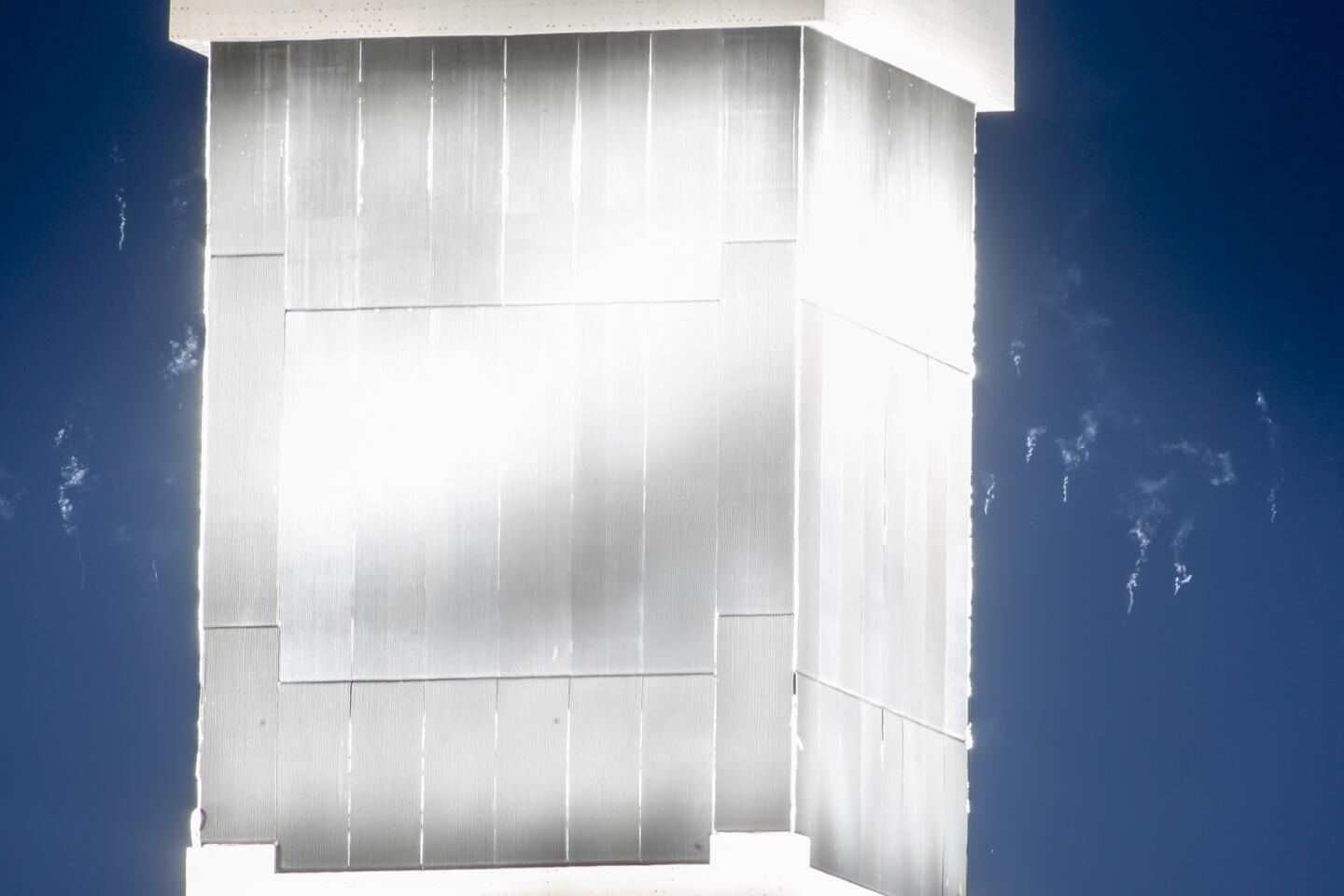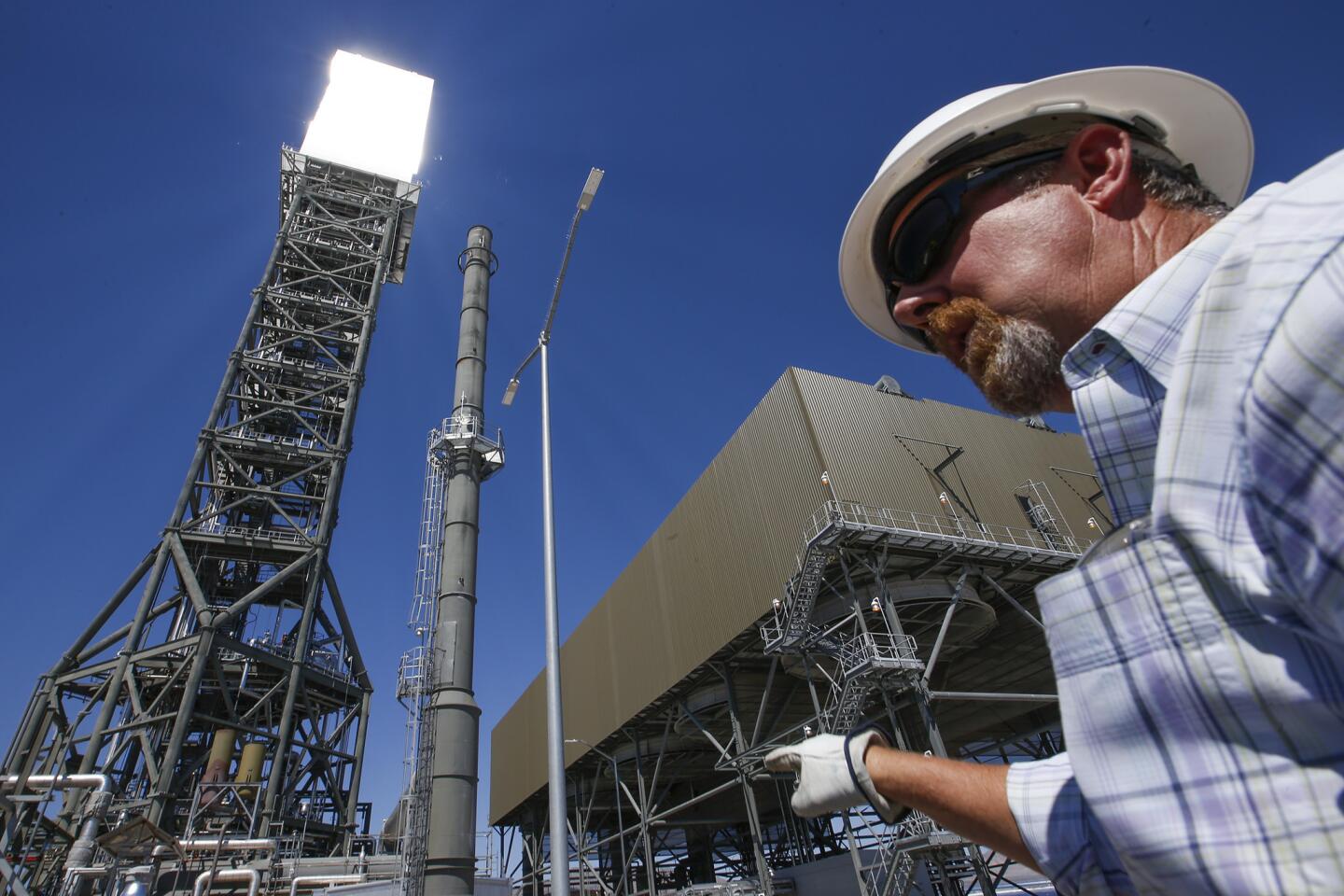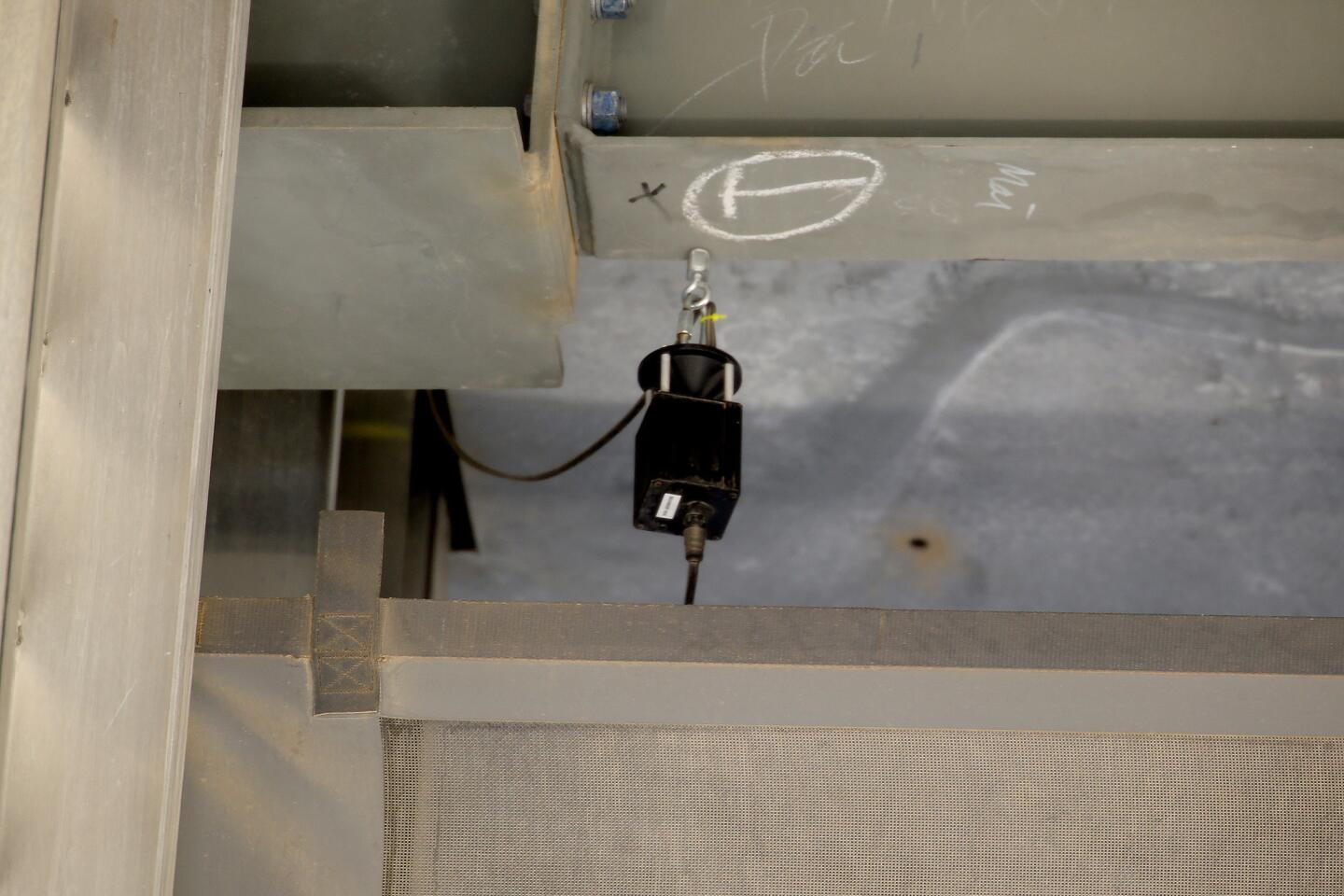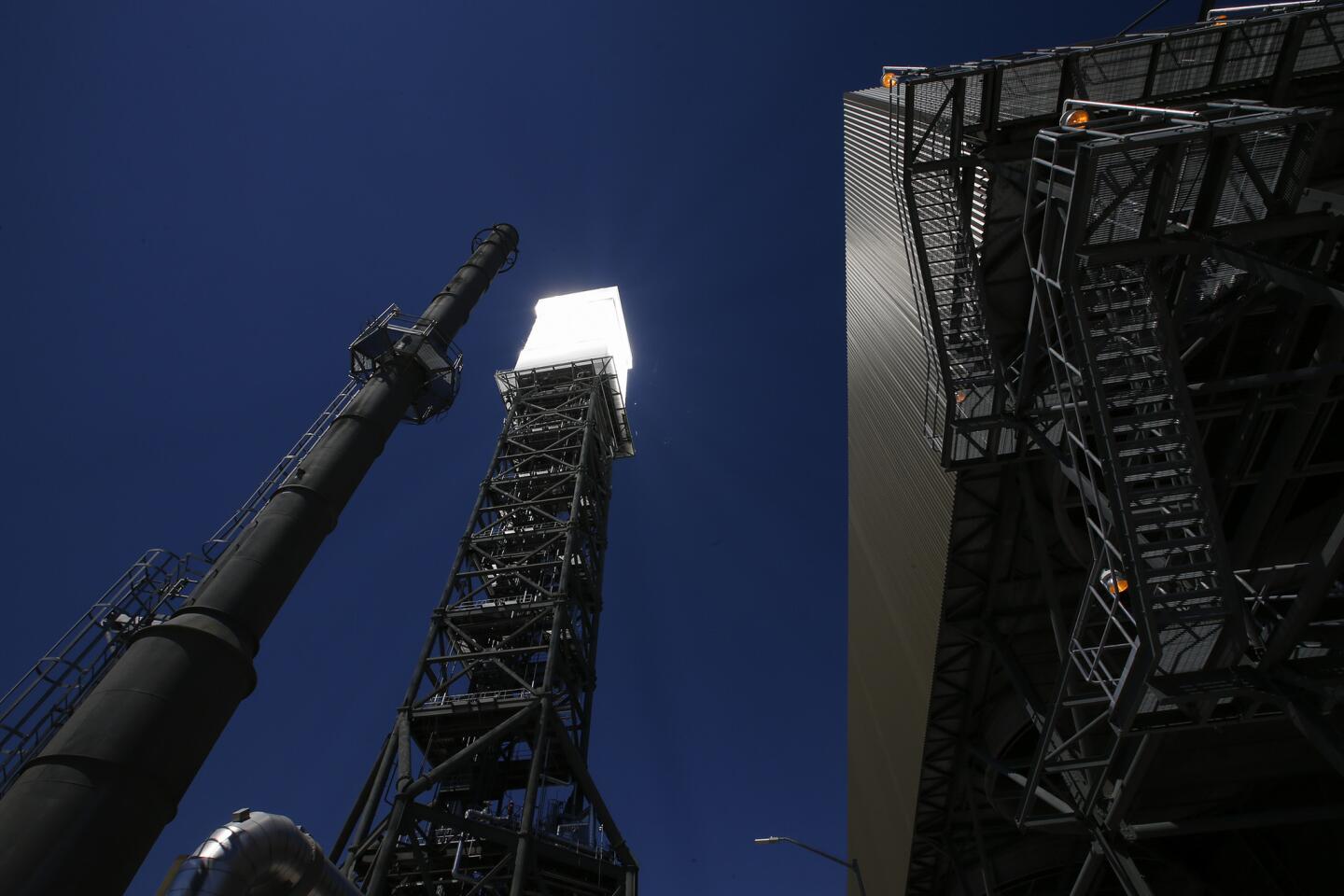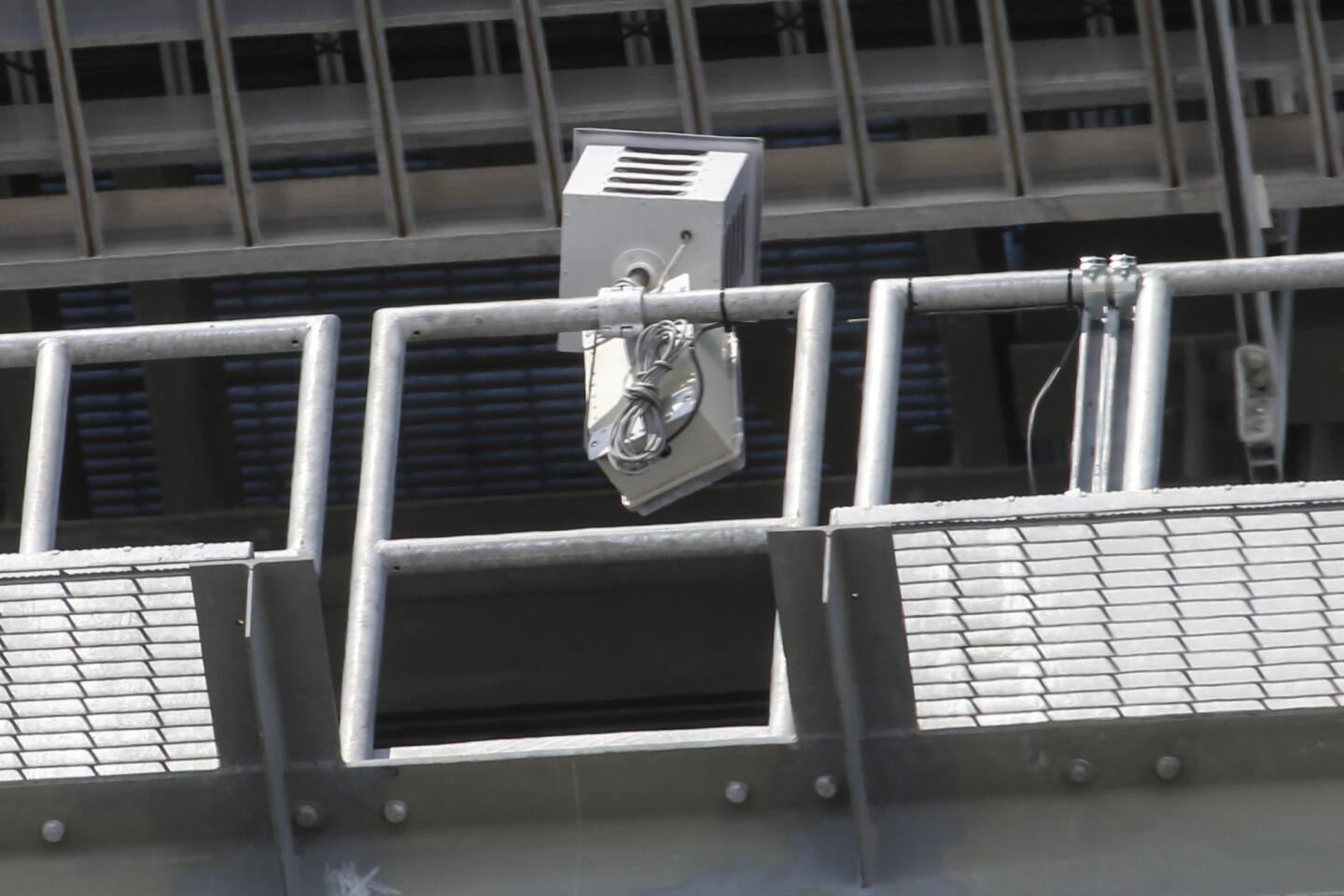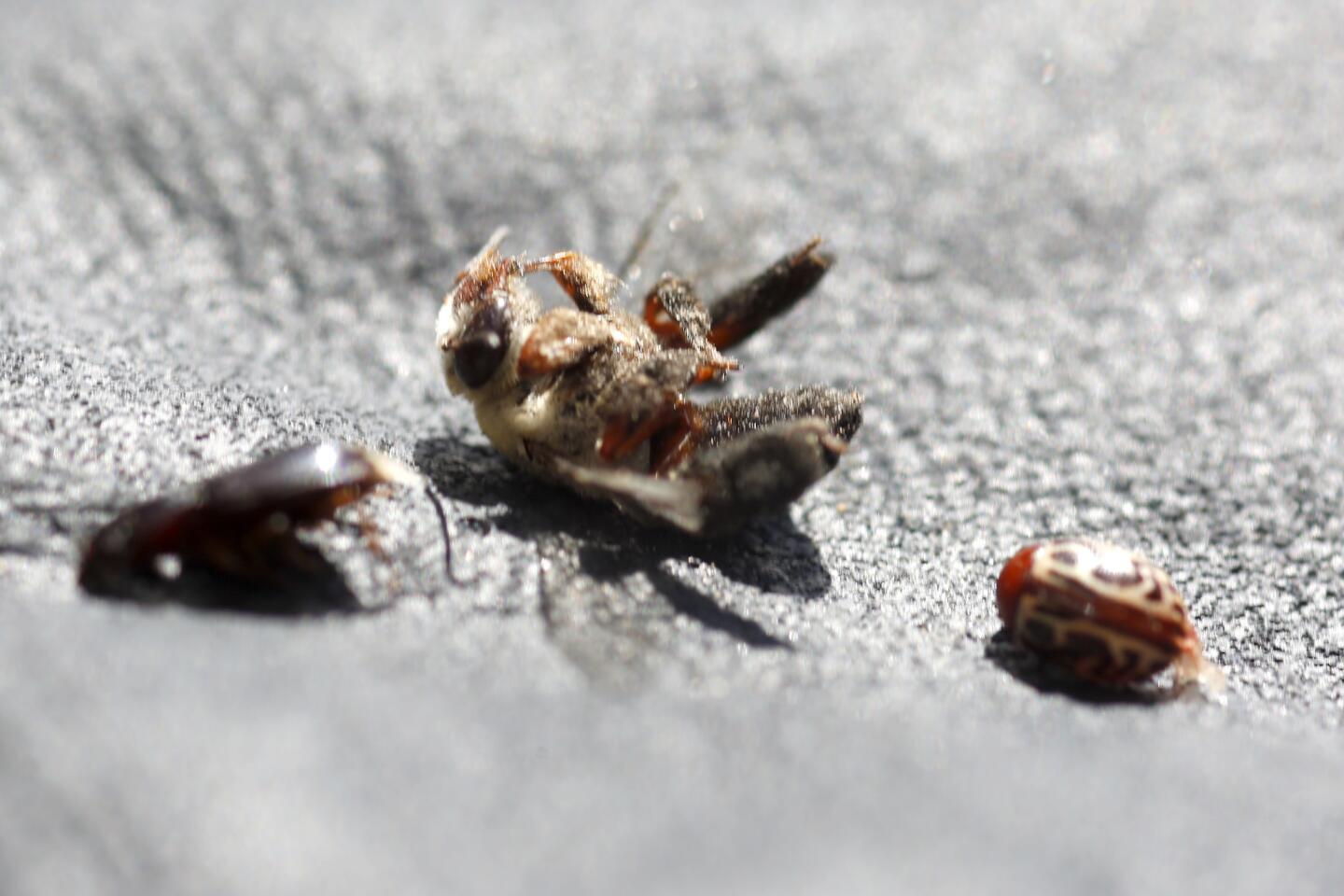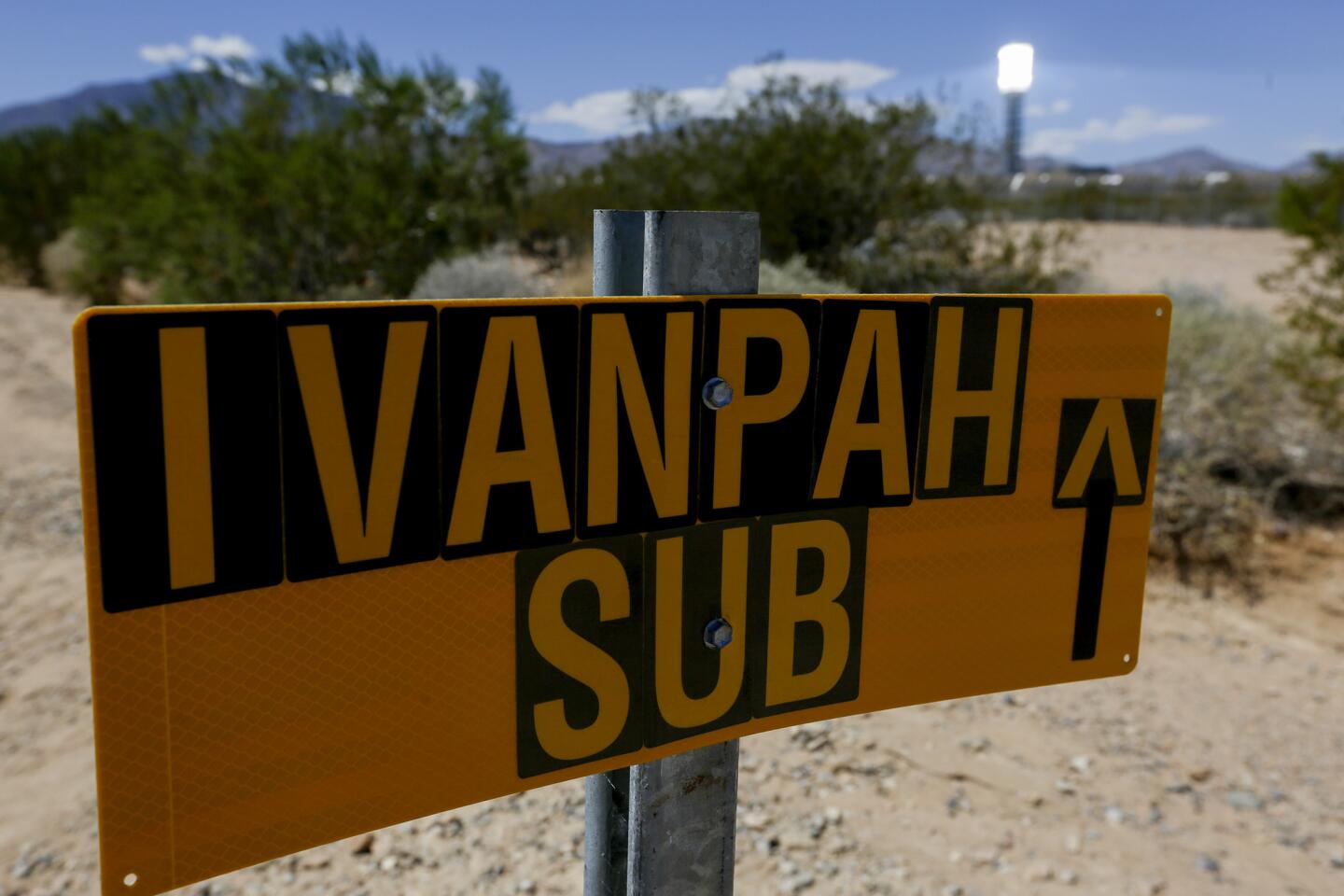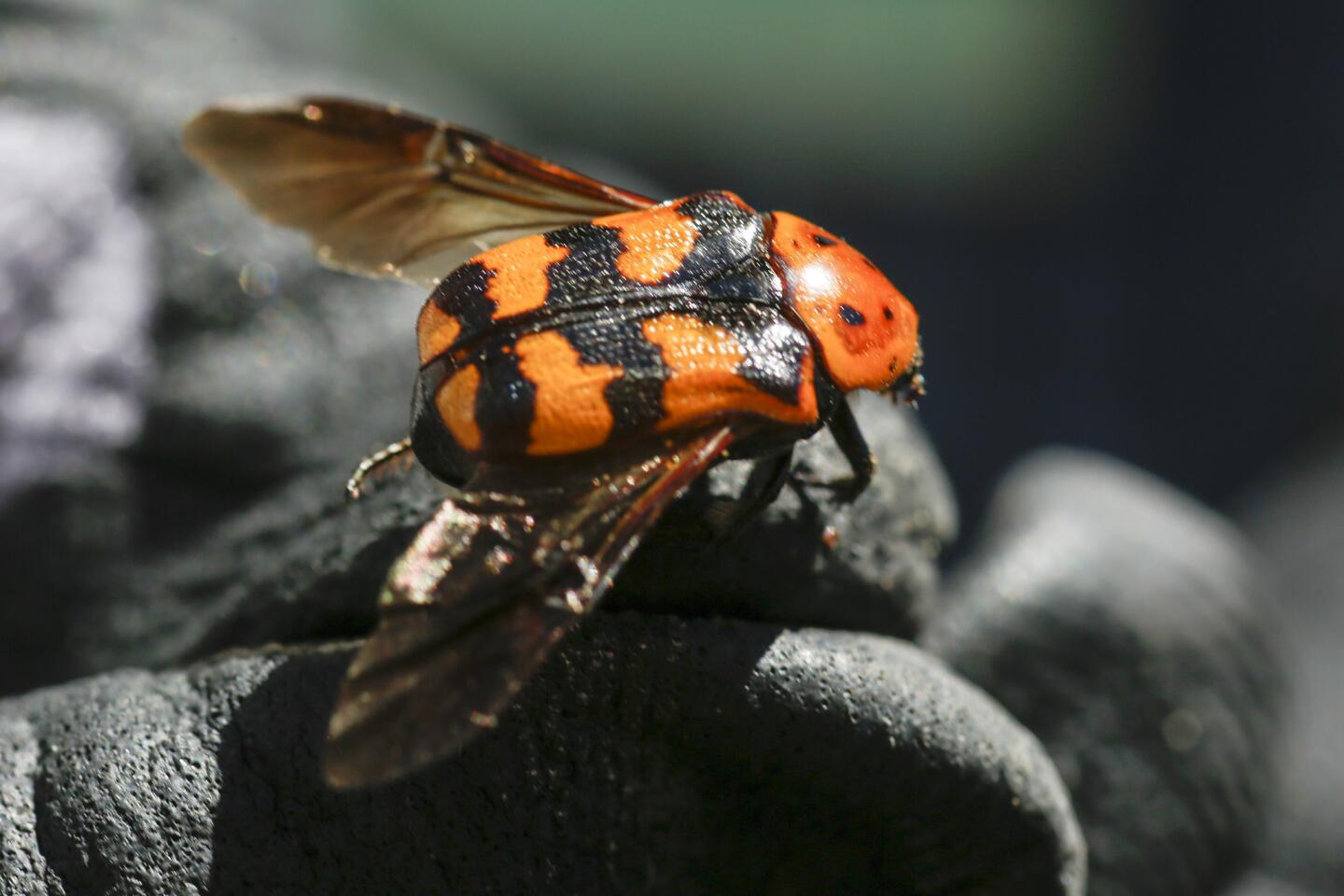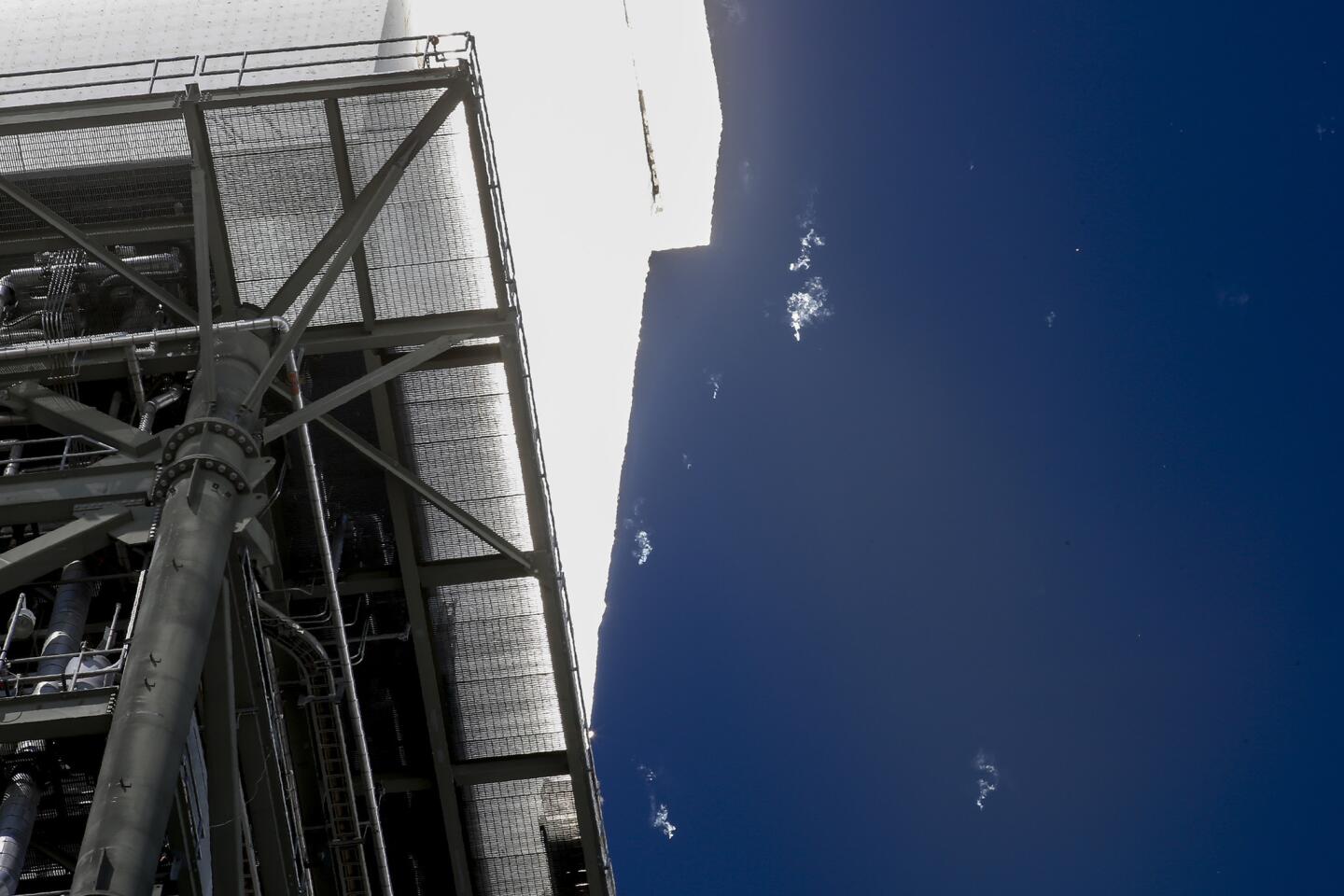This Mojave Desert solar plant kills 6,000 birds a year. Here’s why that won’t change any time soon

Federal biologists say about 6,000 birds die from collisions or immolation annually while chasing flying insects around the facility’s three 40-story towers.
- Share via
Reporting from NIPTON, Calif. — A macabre fireworks show unfolds each day along I-15 west of Las Vegas, as birds fly into concentrated beams of sunlight and are instantly incinerated, leaving wisps of white smoke against the blue desert sky.
Workers at the Ivanpah Solar Plant have a name for the spectacle: “Streamers.”
And the image-conscious owners of the 390-megawatt plant say they are trying everything they can think of to stop the slaughter.
Federal biologists say about 6,000 birds die from collisions or immolation annually while chasing flying insects around the facility’s three 40-story towers, which catch sunlight from five square miles of garage-door-size mirrors to drive the plant’s power-producing turbines.
We’re doing everything we can to reduce the number of birds killed out here
— David Knox, spokesman for NRG Energy Inc., owner of Ivanpah solar plant
In addition, coyotes eat dozens of road runners trapped along the outside of a perimeter fence that was designed to prevent federally threatened desert tortoises from wandering onto the property.
In an interview this week, David Knox, a spokesman for NRG Energy Inc., said the Ivanpah team has been testing an ever-changing combination of tactics to minimize bird deaths and injuries since it began sending power to the grid in 2014. He acknowledged, however, that the results have been “modest.”
“We’re doing everything we can to reduce the number of birds killed out here,” Knox said. “If there’s a silver bullet out there, maybe we’ll find it.”
So far, plant workers have replaced flood lights with LED bulbs, which attract fewer insects and birds that eat them.
They have rearranged the mirrors to reduce birds’ window of exposure.
They have fitted each tower with machines that emit a nonlethal avian respiratory irritant derived from grape juice concentrate, a method typically used to keep birds from congregating on agricultural fields and commercial centers.
And they have attached anti-perching spikes to the towers’ frames, along with devices that broadcast digital recordings of loud, high-pitched shrieking noises.
“We know these deterrents are effective in general commercial use,” Knox said. “Are they as effective in a solar energy plant? We’re trying to figure that out.”
Another promising proposal, said Doug Davis, Ivanpah’s environmental manager, is to install “road runner exits” along the perimeter fence. That idea calls for cutting holes in the fence — about 8 inches in diameter and 18 inches above the ground — to allow road runners to sprint into the compound to avoid becoming meals for hungry coyotes.
Ivanpah will start with a pilot program of four roadrunner exits around one of the towers. “If they’re effect,” Davis said. “We’ll add more.”
The development of large-scale solar energy facilities on public land in the desert has been a top priority of the Obama administration as it seeks to ease the nation’s dependence on fossil fuels and curb global warming.
A Department of Energy loan guarantee enabled construction of the $2.2-billion, project that supporters touted as a showcase of world-class technology and environmentally friendly development.
Environmentalists, however, were critical of establishing the plant in a nearly pristine portion of the Mojave Desert that is home to colonies of desert tortoises and a refuge for birds migrating along the Pacific Flyway.
Unusually heavy rains in the region this year have produced stretches of fresh greenery and flowers teeming with insects. Resident birds such as nighthawks and migrant species including yellow warblers have been feasting on caterpillars, grasshoppers, dragonflies, beetles, bees and wasps — though far more bugs get turned to ash by the solar beams.
Watched through binoculars, “streamers” spiral constantly through the superheated air surrounding Ivanpah’s towers.
Ivanpah... continues to operate as though there’s an endless supply of birds to burn.
— Garry George, Audubon California
“Ivanpah is a bird sink — and an cautionary tale unfolding on public lands,” said Garry George, renewable energy project director for Audubon California. “It continues to operate as though there’s an endless supply of birds to burn.”
The company is collaborating with state and federal regulators and wildlife agencies including the U.S. Fish and Wildlife Service to staunch bird fatalities before they imperil international avian populations protected by the Migratory Bird Act.
But company officials suggest that estimates of the number of birds killed annually at the site are exaggerated, and federal wildlife authorities believe they are too low.
“It may take another nine months of data to determine what is actually going on at Ivanpah in terms of bird mortalities and the effectiveness of various deterrents,” said Amedee Bricky, deputy chief of the Fish and Wildlife Service’s migratory bird program. “Eventually, we hope to transport what we learn to nations around the world developing their own solar energy programs.”
MORE LOCAL NEWS
Hillary Clinton’s brother-in-law due in Los Angeles County court on DUI charges
San Diego County to pay $2.3 million in case of inmate who died after swallowing baggie of meth
More to Read
Sign up for Essential California
The most important California stories and recommendations in your inbox every morning.
You may occasionally receive promotional content from the Los Angeles Times.
